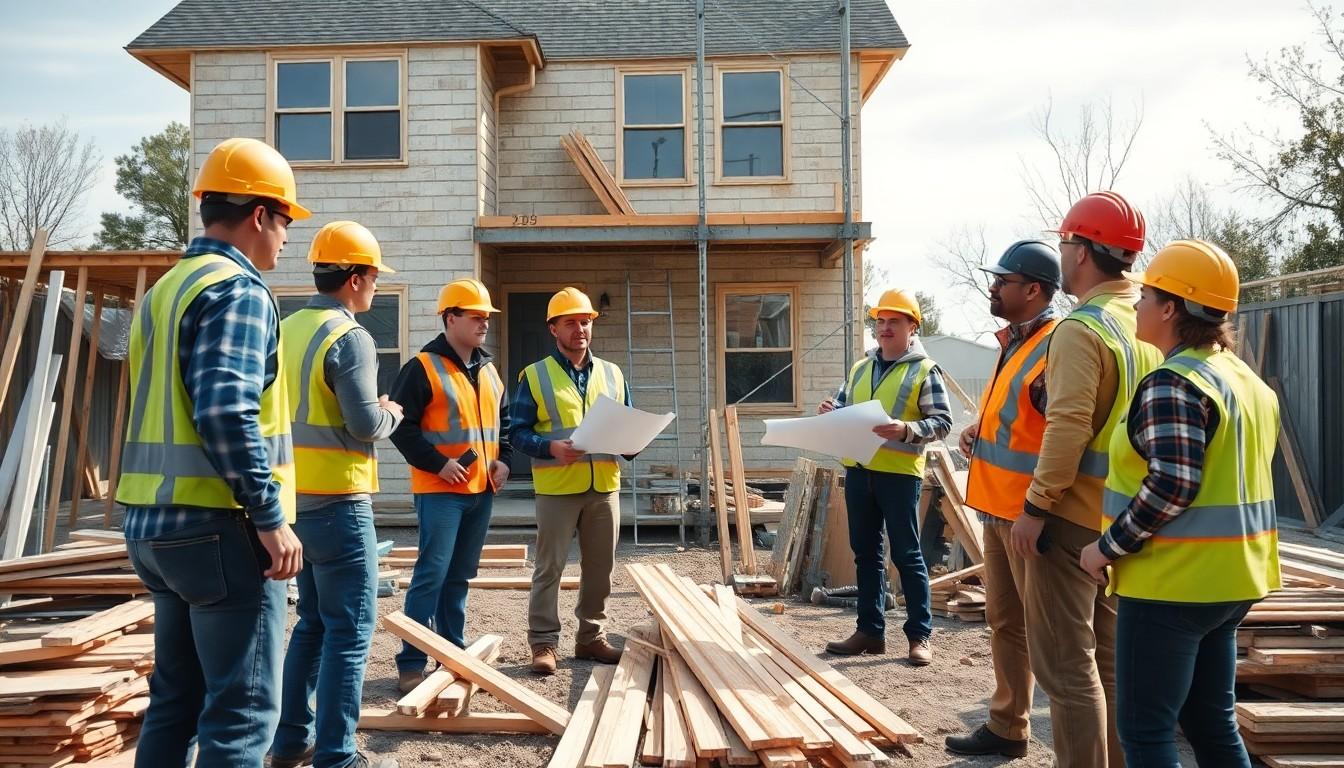As 2024 approaches, homeowners everywhere are wondering if their renovation dreams will finally become affordable. With lumber prices soaring and labor costs skyrocketing, it’s felt like a home improvement heist. But fear not! The crystal ball of home renovation is getting clearer, and it might just reveal a silver lining.
Overview Of Home Renovation Costs
Home renovation costs have surged in recent years due to various economic factors. Lumber prices increased dramatically, impacting overall materials costs. Labor costs rose as skilled workers became scarce and demand soared. In 2023, the Home Improvement Research Institute noted a 12% hike in renovation expenses compared to the previous year.
Current trends indicate fluctuating prices for critical materials like cement and steel. Expectations suggest that supply chain disruptions may ease in 2024, potentially stabilizing costs. Reports show that inflation rates have started to slow, hinting at possible reductions in certain areas of construction expenses.
Several homeowners express concerns about financing renovations amid rising interest rates. Budget considerations have become essential, as many seek to prioritize projects that enhance property value. Popular projects include kitchen remodels, bathroom upgrades, and energy-efficient installations, each category reflecting rising investments.
Analysts predict a gradual decline in some renovation costs, driven by increased competition among contractors and a growing number of available materials. Insight from industry experts emphasizes the importance of planning ahead to mitigate unforeseen expenses. Research indicates that homeowners who wait for price adjustments may benefit from lower costs in essential renovations by mid-2024.
Engaging contractors early can also yield better pricing estimates. Remaining informed about market trends helps homeowners make strategic decisions. Investing time in research encourages cost-effective planning for home improvement projects.
Factors Influencing Renovation Costs

Various elements play a significant role in determining renovation costs as 2024 approaches. Understanding these factors helps homeowners navigate the financial landscape effectively.
Material Prices
Material prices greatly impact overall renovation expenses. Cement and steel values fluctuate, which directly affects project budgets. In 2023, lumber prices surged, contributing to a 12% increase in renovation costs, as reported by the Home Improvement Research Institute. Optimism exists for 2024 as supply chain disruptions may ease; this could lead to a stabilization in material costs. Increased availability of materials might drive down expenses and enhance affordability for homeowners undertaking renovations.
Labor Costs
Labor costs represent a substantial part of renovation budgets. The scarcity of skilled labor fueled higher wages and additional expenses in 2023. Analysts foresee a gradual decline in labor costs due to increased competition among contractors. Homeowners can benefit from this trend by engaging contractors early to negotiate better rates. Staying updated on market conditions aids in making informed decisions about labor resources, which can contribute to effective cost management for renovation projects.
Current Trends In Home Renovation
Home renovation trends reveal insights into where the market is heading in 2024. Homeowners navigate ongoing challenges, primarily driven by economic factors and shifting priorities.
Popular Renovation Projects
Kitchen remodels rank highly among popular renovation projects. Many homeowners focus on upgrading kitchens to enhance property value. Energy-efficient installations attract attention as well, aligning with environmental goals. Outdoor spaces entice homeowners looking to boost curb appeal. Bathroom upgrades emerge as a fundamental choice, ensuring comfort and functionality. These projects often yield significant returns on investment, further motivating homeowners to act.
Economic Influences
Economic influences significantly affect the home renovation landscape. Analysts attribute rising renovation costs to shortages of skilled labor. Prices for materials like cement and steel fluctuate, impacting budgets. Rising interest rates contribute to financial pressures, making project financing a concern for many. Potential stabilization in material prices brings a sense of cautious optimism for 2024. Increased competition among contractors could lead to reduced labor costs, benefiting homeowners. Staying informed about these trends aids homeowners in strategic decision-making for their projects.
Predictions For 2024
Expectations for home renovation costs in 2024 reflect a mix of optimism and caution. Various factors shape these predictions, creating an intricate landscape for homeowners.
Expert Opinions
Industry experts indicate a potential decline in renovation costs as supply chains normalize. Increased material availability might alleviate some price pressures. Economists also suggest that competition among contractors could drive labor costs downward. Many professionals emphasize that focusing on high-demand projects, such as kitchen remodels and energy-efficient upgrades, enhances return on investment. It becomes crucial for homeowners to engage with skilled contractors to ensure quality renovations. Expert insights paint a promising picture, encouraging strategic planning.
Economic Indicators
Economic signals often influence renovation costs significantly. In 2023, a 12% increase in home improvement expenses underscored rising financial pressures. Labor shortages and material price instability fueled these hikes. However, signs of easing inflation and stabilized material costs might shift the trend in 2024. Homeowners are likely to experience adjustments in renovation budgets due to seasonal trends and fluctuations in demand. Analysts suggest that monitoring these economic indicators prepares homeowners for upcoming shifts in the renovation market. Prioritizing energy-efficient projects could make a positive difference as homeowners consider their financial strategies.
Conclusion
Homeowners can approach 2024 with cautious optimism regarding renovation costs. As supply chains stabilize and material availability increases, there’s potential for a decrease in expenses. Competition among contractors may further drive down labor costs, making renovations more affordable.
Focusing on high-demand projects that enhance property value remains crucial. By prioritizing energy-efficient upgrades and strategic renovations, homeowners can navigate the changing landscape effectively. Staying informed about market trends will empower them to make smart financial decisions in the coming year.





